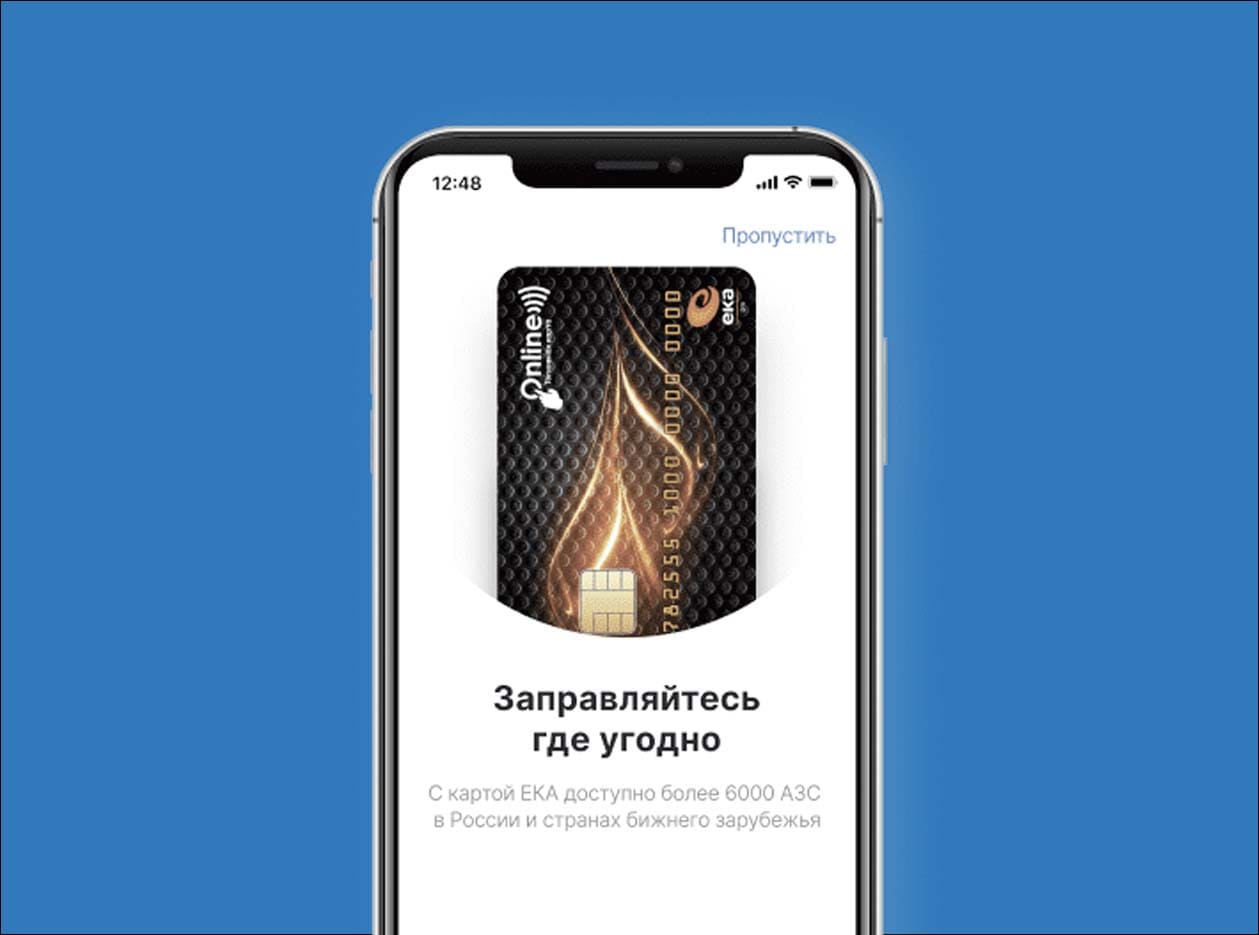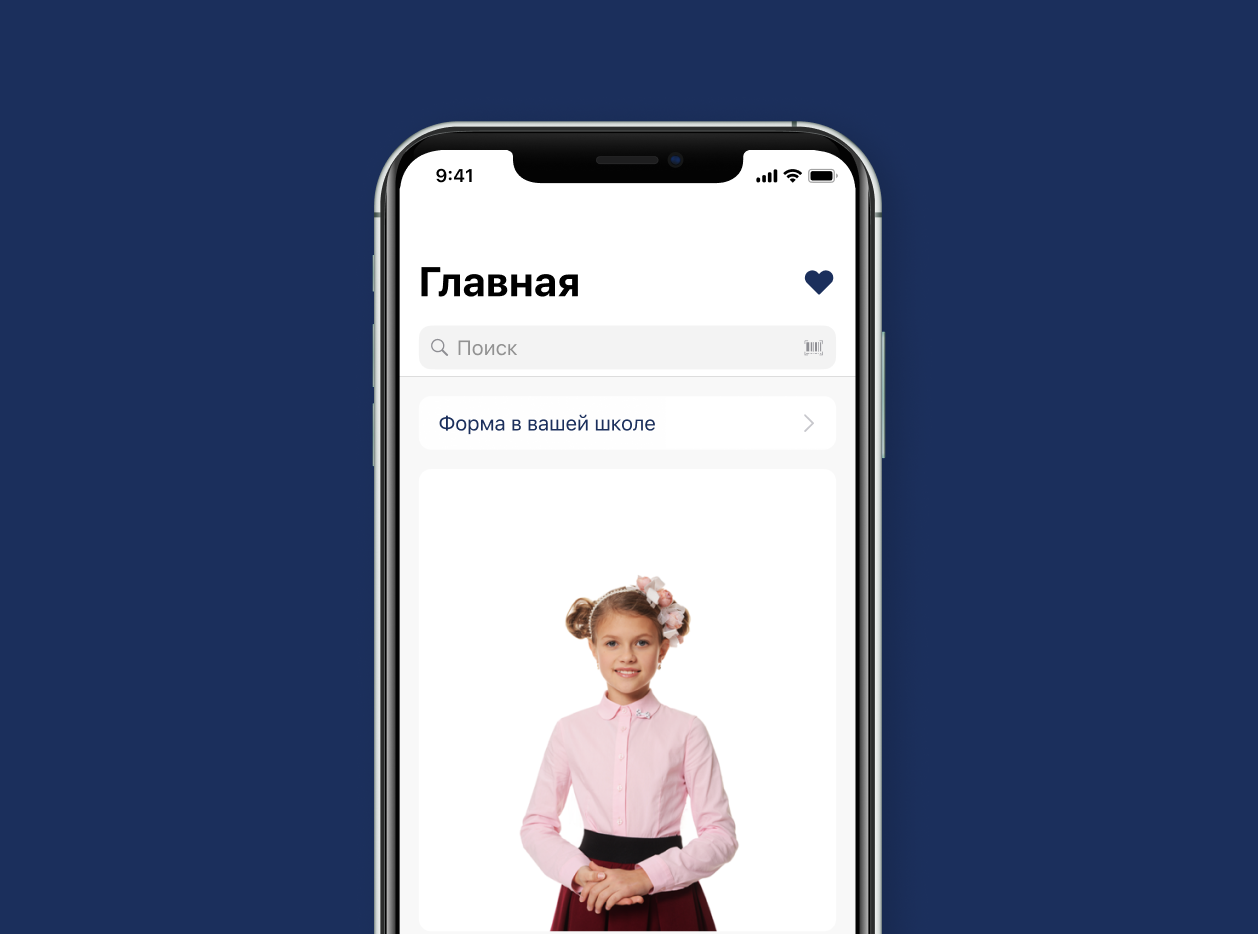Autodata
Mobile app for collecting data on the operation of the car and their sale at the exchange: iOS app
About the project
The app collects comprehensive information about the operation of a car throughout its entire life cycle. Based on this data, new services can be created for car enthusiasts, such as used car loans and on-demand auto insurance.
The app will be interesting to motorists, government agencies, insurance companies, and logistics companies. Services related to road safety will be free for motorists and road services in exchange for permission to collect data from their vehicles. The rest of the services will be for a fee.
Bogdan Melnyk
WINFOX Project Manager
Task
We needed to draw up terms of reference, develop prototypes, draw a design, and design a solution for iOS devices of version 10.0 or higher.
The data reception and transmission service should provide the request and receipt of vehicle parameters via a Bluetooth device in the form of an OBD2 adapter, as well as generate a package of parameters and transmit it to the application.
We needed to configure the connection to the OBD2 adapter and receive data, to implement the algorithm for calculating the parameters of the trip.
The data reception and transmission service should provide the request and receipt of vehicle parameters via a Bluetooth device in the form of an OBD2 adapter, as well as generate a package of parameters and transmit it to the application.
We needed to configure the connection to the OBD2 adapter and receive data, to implement the algorithm for calculating the parameters of the trip.
When developing the application, it was necessary to take into account that data should be collected and transmitted to the server even when the cars are out of mobile coverage.
Bogdan Melnik
WINFOX Project Manager
Solution
They made an intuitive application that even a child can use.
The application includes several main functional parts: connection to the car via Bluetooth, receiving data from the vehicle and selling this data.
The principle of operation can be described as follows. The application includes a constantly running service that automatically establishes a connection to the OBD2 adapter when it detects it. The user selects one or more data sets, which he agrees to transmit and use.
The Autodata application receives from the marketplace application server the composition of parameters for each set, to which the owner has consented, and at specified intervals requests from the OBD2-adapter these vehicle parameters.
The application includes several main functional parts: connection to the car via Bluetooth, receiving data from the vehicle and selling this data.
The principle of operation can be described as follows. The application includes a constantly running service that automatically establishes a connection to the OBD2 adapter when it detects it. The user selects one or more data sets, which he agrees to transmit and use.
The Autodata application receives from the marketplace application server the composition of parameters for each set, to which the owner has consented, and at specified intervals requests from the OBD2-adapter these vehicle parameters.
After all the parameters are received, the application forms data packets in JSON format for transmission to the telematics platform via the REST interface. For each set of parameters a separate JSON is generated and transmitted.
Alexander Khrushchev
Technical Director of WINFOX
We were already making applications that work with the equipment. But we were not familiar with the OBD2 standard and its features. So we tried to assess the possible problems and risks. Firstly, organizational: the time initially allocated for the development and debugging, did not take into account the margin for risk and organizational shortcomings. Secondly, technical: we were not entirely confident that everything would work as planned, because it is problematic to test and debug the application on cars, and the option of ordering emulators did not fit the schedule.
We solved the organizational problem by simplifying communication and initially considering that all potential risks would definitely play out. In fact, this did not happen, but the confidence that we took everything into account played a big role in motivating the team.
With the technical problem, we took the easiest route - testing the app on real cars. Despite the fact that this way is the most uncomfortable for a developer (many of the parameters can only be obtained while driving), this way was optimal in comparison with other options.
Alexander Khrushchev
Technical Director, WINFOX
Main app screens
Automobile
This screen displays basic sets of vehicle parameters, such as navigation, diagnostics, and trip data. For each group, the number of parameters is indicated: you do not need to go into a section to find this out.
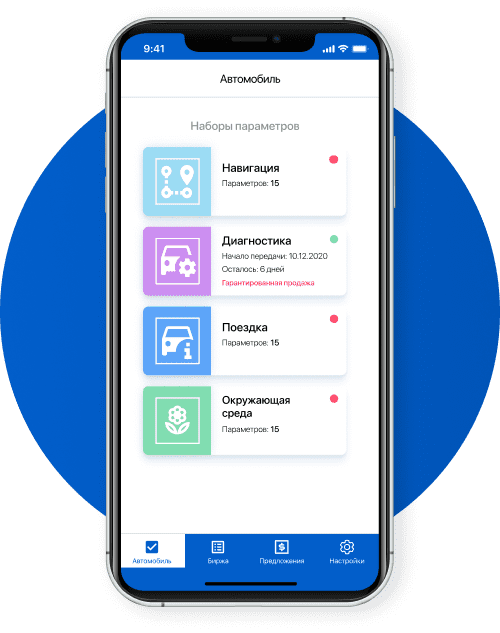
Stock
This displays a list of data sets that the car owner can put up for sale.
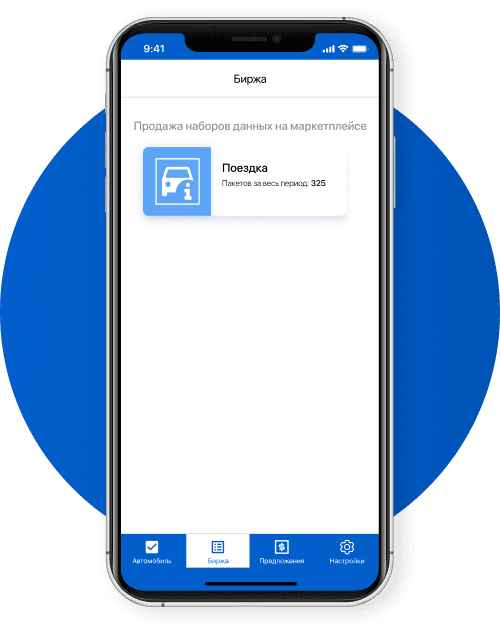
Offers
This section contains the current offers of the machine owner for the sale of the parameter sets. For each offer, the date of the offer for sale, the expiration date, and the cost are displayed.
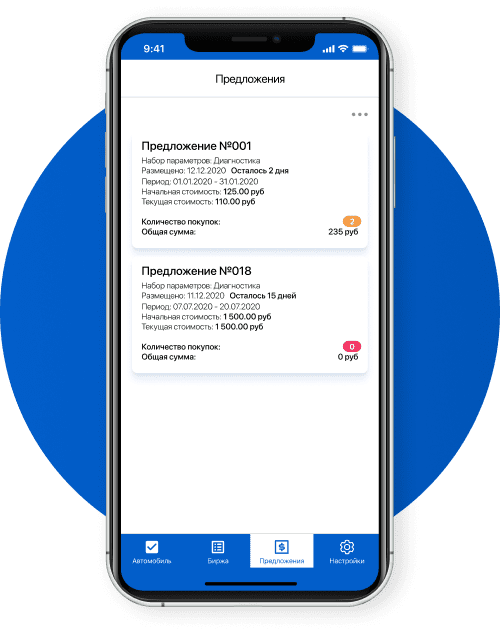
Settings
The application provides search and detection of bluetooth device, so in the settings the user can manually start searching for the device, enter the VIN number of the car and check the connection.
The app remembers the device to which it has already connected. All subsequent connections are made automatically without asking for a PIN code.
Alexander Khrushchev
Technical Director of WINFOX
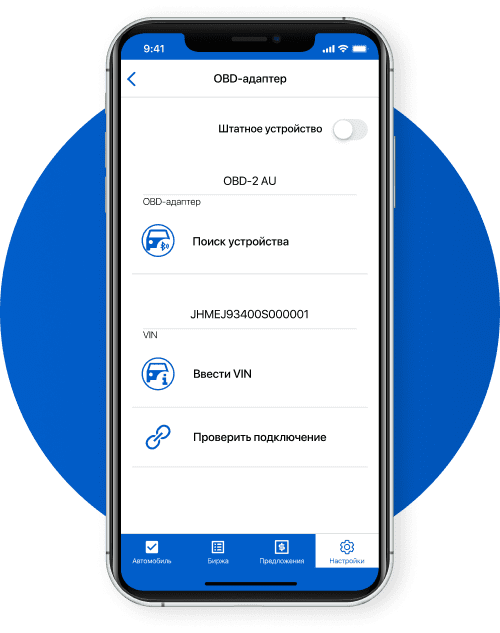
What the app can do
Configuring parameter sets
Settings can be made for each of the parameter sets. For example, the user can set the frequency of data transfer from the adapter to the application.
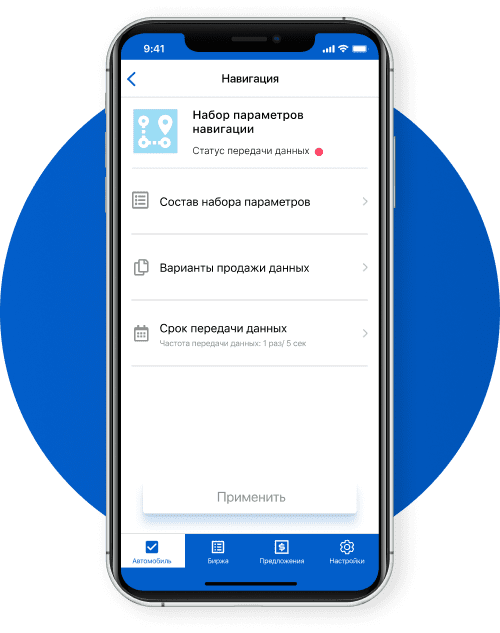
Viewing the parameter sets
By going to this section, you can see the composition of the parameter set. The data is presented in a concise list with a scroll bar, so that nothing distracts the user from the important information.
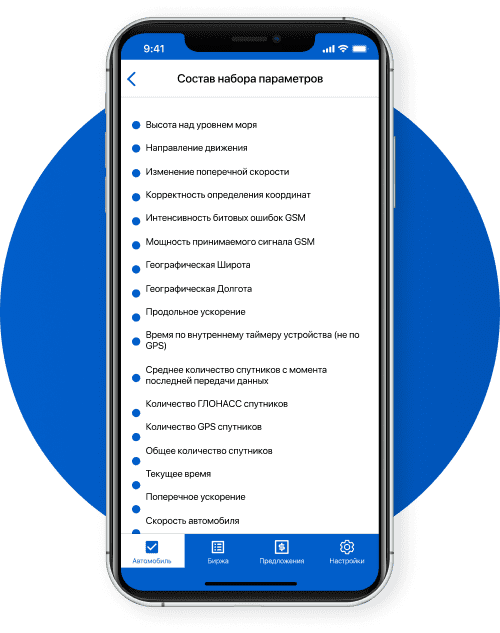
Selling a set of parameters
The user can select different options for selling data from his car. The choice is fully automated: you don't need to enter the data manually - just check the box next to the appropriate option.
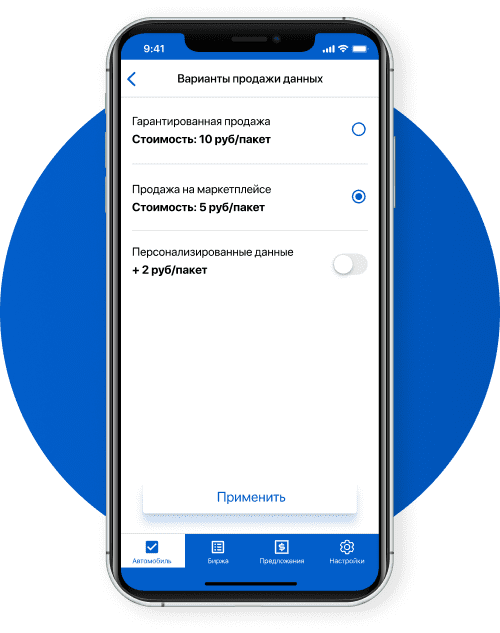
Changing the cost of a set of parameters
The user can change the value specified in the offer for the parameter set sale. When the value of the offer changes, the new value is displayed.
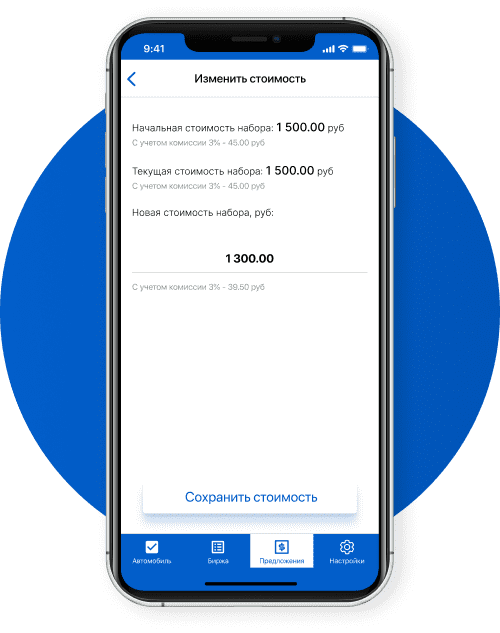
Stopping data transmission
By entering the parameter set, you can stop the transfer of these parameters from the car to the application. There is a special button at the bottom of the screen for this purpose.
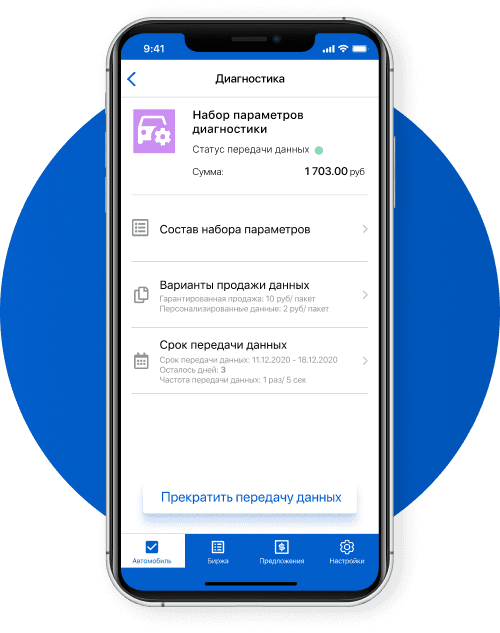
Outcome
With the Autodata app, car owners can track data from a vehicle in real time and, if they wish, earn money by selling this data.
In a given period of time, the vehicle transmits data on the condition of headlights and parking lights, road works, reduced visibility, obstacles in the road, and signs of driver fatigue. In addition, the car owner monitors the technical condition of the car, timely finding out about the triggering of the engine error indicator, brake failure and wear of the brake pads.
Road services and other departments of public services, receiving this data, can more quickly identify potentially dangerous cars on the road and more effectively carry out search activities.
In a given period of time, the vehicle transmits data on the condition of headlights and parking lights, road works, reduced visibility, obstacles in the road, and signs of driver fatigue. In addition, the car owner monitors the technical condition of the car, timely finding out about the triggering of the engine error indicator, brake failure and wear of the brake pads.
Road services and other departments of public services, receiving this data, can more quickly identify potentially dangerous cars on the road and more effectively carry out search activities.
Project
team
team
Project Manager
Bogdan
Technical Director
Alexander Khrushchev
UX/UI designers
Dmitry
Developer
Dmitry

